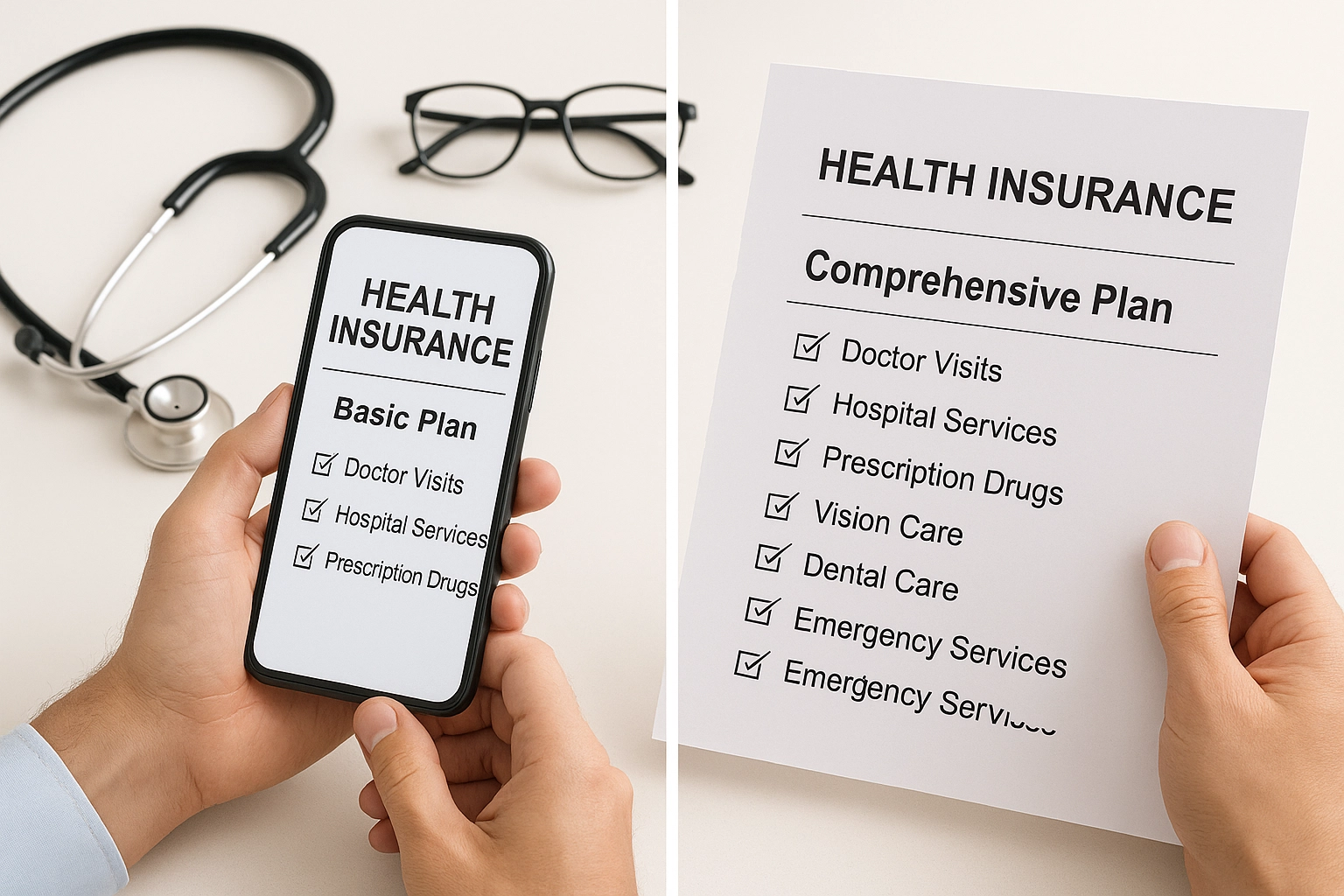Health Insurance Premiums Rising 6.5% in 2026? Here's How to Protect Your Budget
- Admin
- Sep 9
- 5 min read
If you've been planning for a modest 6.5% increase in your health insurance premiums next year, we need to have a serious conversation. The reality facing most Americans is significantly more challenging, and understanding the true scope of these increases is the first step toward protecting your financial wellbeing.
The Real Numbers: Premium Increases Are Much Higher Than Expected
Here's what you actually need to prepare for: ACA Marketplace premiums are facing a median proposed increase of 18% for 2026: more than double last year's 7% median increase. This isn't a minor budget adjustment we're talking about; this represents a substantial shift that could impact your household finances in ways you may not have anticipated.
Even more concerning, more than a quarter of insurers are proposing premium increases of 20% or higher. To put this in perspective, only 3% of insurers increased premiums by 20% or more last year. The landscape has changed dramatically, and your budget planning needs to reflect this new reality.

Consider what this means for your monthly expenses. If you're currently paying $400 per month for health insurance, an 18% increase would bring that to $472: an additional $864 per year. For families paying $1,200 monthly, you're looking at an extra $2,592 annually. These aren't numbers you can simply absorb without making adjustments elsewhere.
Why Your Premiums Are Skyrocketing
Understanding the driving forces behind these increases can help you make more informed decisions about your coverage and financial planning. Several factors are creating what industry experts call a "confluence" of upward pressure on health insurance markets.
Rising Healthcare Costs Lead the Way
Healthcare costs continue their relentless climb, with insurers expecting approximately 8% annual increases in underlying medical expenses. This alone accounts for the bulk of next year's premium adjustments. While this trend isn't new, it's accelerating at a pace that's outstripping general inflation and wage growth for many Americans.
The Federal Subsidy Cliff
Perhaps the most significant factor: and the one creating the most uncertainty: is the potential expiration of enhanced premium tax credits at the end of 2025. These subsidies currently help more than 90% of ACA enrollees nationwide manage their healthcare costs.
If Congress doesn't act by September 30th to extend these credits, you could face an average 75% cost increase beyond the already substantial premium hikes. For many families, this represents the difference between affordable healthcare coverage and going uninsured.
Strategies to Shield Your Budget From Premium Shock
While you can't control market forces, you can take deliberate steps to minimize the financial impact on your household. Here's your action plan for navigating these challenging waters.
Review Your Current Coverage Thoroughly
Before you do anything else, take a comprehensive look at your existing plan. Ask yourself: Are you using all the benefits you're paying for? Many people discover they're over-insured in some areas while being vulnerable in others.

Schedule time to review your past year's healthcare usage. Did you meet your deductible? How often did you visit specialists? Are you taking advantage of preventive care benefits that could save you money long-term? This analysis will guide your decision-making as you evaluate options for 2026.
Explore Different Plan Types
Your current plan structure might not be the most cost-effective option given the new premium landscape. High-deductible health plans (HDHPs) paired with Health Savings Accounts (HSAs) can offer significant tax advantages and lower monthly premiums, though they require more out-of-pocket spending upfront.
Conversely, if you have ongoing medical needs, a plan with higher premiums but lower deductibles might actually cost less overall. Run the numbers based on your expected healthcare usage, not just the monthly premium amount.
Maximize Available Tax Benefits
If you qualify for an HSA, you're looking at triple tax benefits: deductible contributions, tax-free growth, and tax-free withdrawals for qualified medical expenses. For 2026, contribution limits are expected to remain robust, allowing you to essentially pre-fund your healthcare costs with pre-tax dollars.
Even if you don't qualify for an HSA, consider other tax-advantaged options like Flexible Spending Accounts (FSAs) through your employer. These can help you manage the increased cost burden by reducing your taxable income.
Timing Your Healthcare Spending
If you know you'll face higher costs in 2026, consider whether any planned procedures or treatments could be scheduled before the premium increases take effect. This strategy requires careful coordination with your healthcare providers and consideration of your current plan's benefits structure.
Build Healthcare Costs Into Your Financial Planning
This is where the intersection of insurance and broader financial planning becomes critical. Healthcare cost inflation needs to become a permanent fixture in your retirement and long-term financial planning calculations.

If you're approaching retirement, these premium increases underscore the importance of having dedicated healthcare reserves beyond your traditional retirement savings. Medicare doesn't start until age 65, and if you retire earlier, you'll be navigating the individual insurance market during what are likely to be continued years of significant premium growth.
Understanding Your Timeline and Options
The clock is ticking on several fronts, and understanding key dates can help you make more strategic decisions.
Federal Action Deadline: September 30th
Congress has until September 30th to extend the enhanced premium tax credits. If they don't act, you'll face not just the premium increases we've discussed, but potentially much steeper costs due to reduced federal support. Stay informed about Congressional action on this front, as it could dramatically alter your 2026 options.
Rate Finalization: Late Summer
Insurers will finalize their 2026 rates in late summer, giving you a clearer picture of your actual costs before open enrollment begins November 1st. Don't make any irreversible financial decisions based on proposed rates alone: wait for the final numbers when possible.
Open Enrollment: November 1st
Mark your calendar now. Open enrollment for 2026 coverage begins November 1st, and given the dramatic rate changes expected, you'll want to carefully compare all available options rather than simply auto-renewing your current plan.
What This Means for Your Broader Financial Security
These healthcare cost increases don't exist in a vacuum: they're part of your overall financial picture. Consider how absorbing an extra $200-300 monthly in healthcare costs might affect your ability to save for retirement, build an emergency fund, or meet other financial goals.
You might need to make adjustments in other areas of your budget, or look for ways to increase your income to maintain your current savings rate. This is particularly important if you're in your peak earning years and trying to maximize retirement contributions.
The key is approaching these changes thoughtfully rather than reactively. Healthcare is a non-negotiable expense for most families, but how you structure and pay for that coverage involves choices that can significantly impact your long-term financial wellbeing.
Remember, this situation affects millions of Americans, and you're not navigating it alone. Professional guidance can help you evaluate your options within the context of your complete financial picture, ensuring that your healthcare decisions support rather than undermine your broader financial goals.
As we approach the critical decision periods ahead, stay informed about Congressional action on subsidies, prepare for the reality of substantial premium increases, and begin planning now for how you'll adapt your budget and coverage strategy for 2026.





Comments